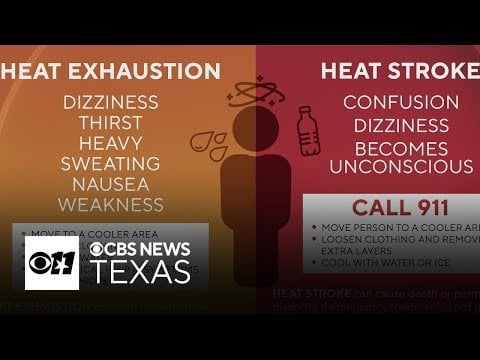
BREAKING NEWS
Heat Wave Alert: Knowing the Difference between Heat Stroke and Heat Exhaustion is Crucial for Your Health
As the mercury rises across the country, the risk of heat-related illnesses is also increasing. It’s essential to recognize the warning signs and symptoms of heat stroke and heat exhaustion, as they can quickly become life-threatening if left untreated.
Heat Stroke vs Heat Exhaustion: What’s the Difference?
Heat stroke and heat exhaustion are two life-threatening conditions that can occur when the body is unable to regulate its temperature in hot weather. While they share some similar symptoms, they require different treatments and can have serious consequences if not addressed promptly.
Heat Exhaustion
Heat exhaustion is a milder condition that can develop when the body’s ability to cool itself is impaired. The symptoms of heat exhaustion include:
- Heavy sweating
- Pale, cool, and clammy skin
- Fast and weak pulse
- Nausea or vomiting
- Dizziness or fainting
- Headache
- Fatigue or weakness
If left untreated, heat exhaustion can progress to heat stroke, which is a medical emergency.
Heat Stroke
Heat stroke is a life-threatening condition that occurs when the body’s temperature regulation system is overwhelmed. The symptoms of heat stroke include:
- High body temperature (above 103°F or 39.4°C)
- Dry, flushed skin
- Confusion, altered mental state, or loss of consciousness
- Slurred speech
- Seizures or coma
Heat stroke requires immediate medical attention, as it can cause long-term brain damage, organ failure, and even death.
Prevention is Key
The best way to prevent heat-related illnesses is to take precautions in hot weather:
- Stay hydrated by drinking plenty of water
- Avoid strenuous activities during the hottest part of the day
- Wear lightweight, loose-fitting clothing
- Take regular breaks in shaded or air-conditioned areas
- Check on vulnerable populations, such as the elderly and young children, who may be more susceptible to heat-related illnesses
What to Do in Case of a Heat-Related Emergency
If you or someone you know is experiencing symptoms of heat exhaustion or heat stroke, seek medical attention immediately. Until help arrives, provide the following treatment:
- Move to a cooler location
- Remove excess clothing
- Spray or splash the person with water to cool them down
- Fan the person to circulate air
- Provide cool water to drink
Remember, recognizing the difference between heat stroke and heat exhaustion is crucial for timely and effective treatment. Don’t wait until it’s too late – stay safe and stay informed this summer!
SEO Tags:
- Heat stroke
- Heat exhaustion
- Heat-related illnesses
- Heat wave
- Summer safety
- Prevent heat exhaustion
- Prevent heat stroke
- Symptoms of heat exhaustion
- Symptoms of heat stroke
- Treatment of heat exhaustion
- Treatment of heat stroke
- Heat exhaustion prevention
- Heat stroke prevention
- Heat safety tips
- Hot weather safety
- Summer heat health risks
What’s the difference between heat stroke and heat exhaustion?
View info-news.info by truth-4-sale

TIL: being heavy is a symptom of heat exhaustion